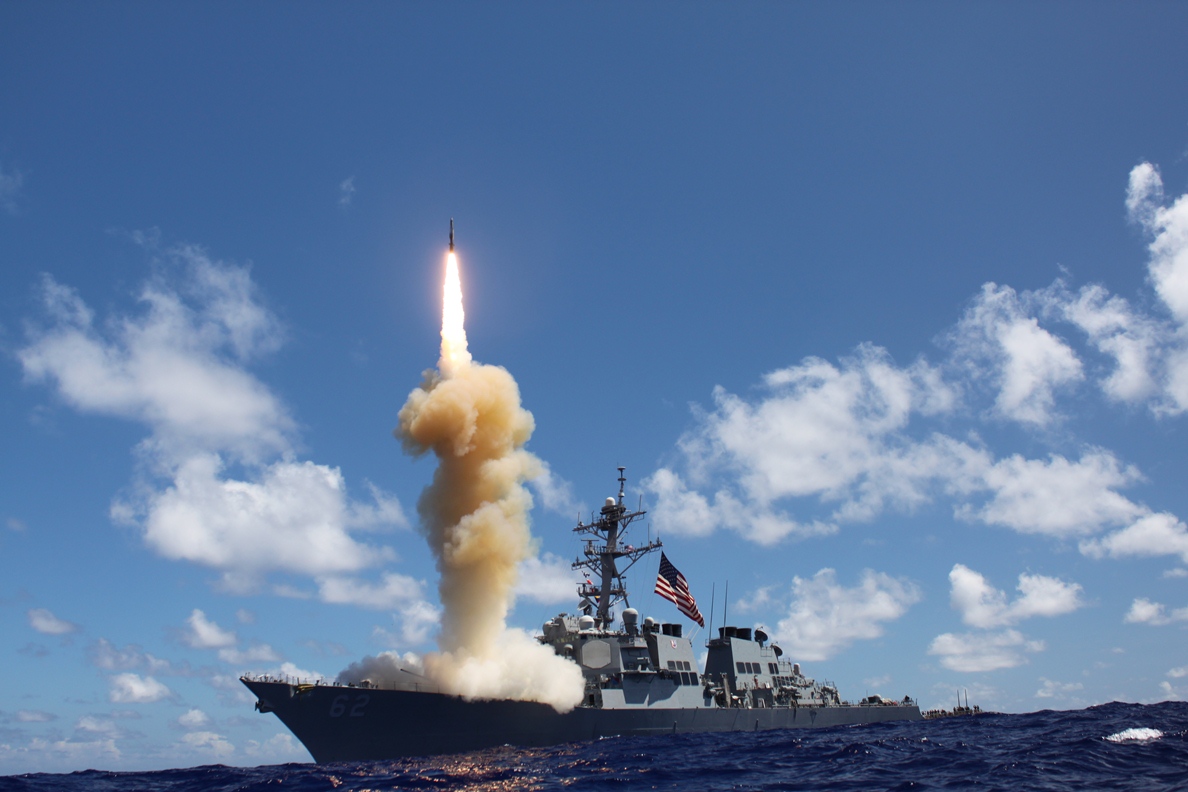On May 30th 2017, America will test its Ground-Based Midcourse Defense system (GMD) against a target designed to simulate an ICBM attack against the continental United States for the first time. This test occurs against a backdrop of growing worries relating to North Korea’s nuclear program and their active attempts to procure an ICBM capable of targeting the United States. Given the nuclear nature of the threat facing the United States, American ballistic missile defense (BMD) systems are an important component of American deterrence capabilities. Here are 5 reasons why this upcoming test could affect American deterrence.
1) No Current Alternatives to GMD
America possesses wide ranging ballistic missile defense capabilities, from the Aegis defense system to the Patriot Advanced Capability-3 (PAC-3) and Terminal High Altitude Area Defense (THAAD) system, but only the GMD system is, in theory, capable of intercepting an ICBM missile. Currently, a total of 36 GMD systems are in place in Alaska and the Vandenberg Airbase in California. Despite plans to increase this number to 44, numerical quantity does not compensate for reliability and this upcoming test will reveal whether the U.S. military is capable of upholding its stated goal of ‘reliably’ intercepting ICBMs directed against America.
2) Another fail will tarnish a blemished record
America’s GMD system has the least successful interception record, at 52%, compared with other BMD systems like THAAD (100%) and Aegis (83%). The GMD’s worrying record of 9 successful intercepts out of 17 tests is itself a danger to the credibility of American deterrence because it reveals a discrepancy between stated American objectives and existing capabilities (which clearly need some work before being able to ‘reliably’ intercept an ICBM missile). If the next test fails, the GMD would have a standing 50% intercept success rate, which is surprising as these tests “are scripted for success”. All 17 tests conducted by the GMD have been directed against short range and intermediate range missiles, and since this is the first time GMD’s Exo-atmospheric Kill Vehicle (EKV) payload is targeting an ICMB, it will set a precedent that militaries around the world will take note of.
3) Current upgrade programs not focused on ICBMs
The recent celebrations of the new SM-3 Block II A’s successful intercept is good news for American deterrence against short and intermediate range missiles, especially since the SM-3 Block II A is capable of intercepting missiles at both the boost and mid-course phase. However, noticeably absent from a list of SM-3’s capabilities are the ability to intercept long range intercontinental missiles. If the upcoming missile test is unsuccessful the United States military must focus current programs on improving the GMD’s ability to intercept an ICBM.
4) Desired capabilities are still years away
The Missile Defense Agency (MDA), tasked with development and testing of US BMD, is currently in the research and development phase of a project that seeks to effectively eliminate the role of missile interceptors in BMD by using high energy lasers. Ultimately, MDA’s objective is to integrate a high power solid state laser (SSL) into an aircraft, preferably unmanned, that is capable of reaching high altitudes and destroying targets in the boost phase. The basic concept of shooting down a ballistic missile with an air borne laser (ABL) has already been accomplished, but overcoming a variety of problems from laser strength and range, aircraft airborne capabilities and others, means that this objective is estimated to take another 10 years until the system can be fielded in military scenarios.
5) Successful test strengthens deterrence
Deterrence, as a concept, has an important psychological component to it, which means intangibles like credibility play a significant role in the effectiveness of a state’s deterrent. If this week’s test is successful it will send the message that American capabilities are able to live up to stated goals. Even though little doubt exists about the ultimate objectives of North Korea’s missile program, North Korea is still unable to field a missile of greater than 6000km range. A successful interception would signal to North Korea that, even if they are able provide their KN-08 missile a range of 10,000 km, it would not guarantee a successful strike on the continental U.S. Russia, while boasting that their latest missile developments are able to circumvent BMD systems, will also be paying attention to the outcome of a test that influences how American missile defense and deterrence is perceived by both friends and allies.
Should the upcoming test see the GMD system fail to intercept its target, the result would be a worrying sign for the American military. Since no other current alternatives exist to the GMD interceptors at Vandenberg and Alaska, a failed test would send the message of an America that currently lacks the capability to intercept an ICBM strike despite stating it has the capability to do so. Current programs are focused on other aspects of BMD that fall short of intercepting ICBMs and possible alternatives are too far off in the future to provide a source of comfort for those seeking a reliable defence against threats of a nuclear nature.
Photo: A guided-missile destroyer USS Fitzgerald (DDG 62) launches a Standard Missile-3 (SM-3) as apart of a joint ballistic missile defense exercise (2012) via U.S. Navy
Disclaimer: Any views or opinions expressed in articles are solely those of the authors and do not necessarily represent the views of the NATO Association of Canada.




